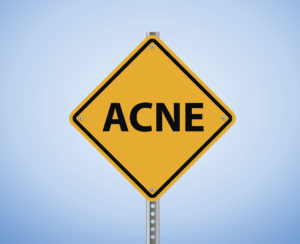Cystic Acne Treatment

Guardian featured Harley Street IBS, Skin & Autoimmune Clinic addresses the underlying issues in cystic acne treatment and not just the symptoms.
What is Acne?
Acne is a skin condition that occurs when your hair follicles become plugged with oil and dead skin cells. It often causes whiteheads, blackheads or pimples, and usually appears on the face, forehead, chest, upper back and shoulders. Acne is most common among teenagers, though it affects people of all ages.
Symptoms
Acne signs and symptoms vary:
- Whiteheads (closed plugged pores)
- Blackheads (open plugged pores)
- Small red, tender bumps (papules)
- Pimples (pustules), which are papules with pus at their tips
- Large, solid, painful lumps beneath the surface of the skin (nodules)
- Painful, pus-filled lumps beneath the surface of the skin (cystic lesions)
For many people, acne can persist for decades, with flares in women common a week before menstruation. In older adults, a sudden onset of severe acne may signal an underlying disease requiring medical attention.
Causes
Four main factors cause acne:
- Excess oil production
- Hair follicles clogged by oil and dead skin cells
- Bacteria
- Excess activity of a type of hormone (androgens)
Acne typically appears on your face, forehead, chest, upper back and shoulders because these areas of skin have the most oil (sebaceous) glands. Hair follicles are connected to oil glands.
The follicle wall may bulge and produce a whitehead. Or the plug may be open to the surface and darken, causing a blackhead. A blackhead may look like dirt stuck in pores. But actually, the pore is congested with bacteria and oil, which turns brown when it’s exposed to the air.
Pimples are raised red spots with a white centre that develop when blocked hair follicles become inflamed or infected with bacteria. Blockages and inflammation that develop deep inside hair follicles produce cyst-like lumps beneath the surface of the skin. Other pores in the skin, which are the openings of the sweat glands, aren’t usually involved in acne.
Factors that may worsen acne
These factors can trigger or aggravate acne:
- Hormones. Androgens are hormones that increase in boys and girls during puberty and cause the sebaceous glands to enlarge and make more sebum. Hormonal changes related to pregnancy and the use of oral contraceptives also can affect sebum production.
- Certain medications. Examples include drugs containing corticosteroids, testosterone or lithium.
- Diet. Studies indicate that certain dietary factors are involved
- Stress. Stress can make acne worse
Our Treatment
Cystic acne treatment will take into account all lifestyle, diet and age factors including hormone status. Functional medicine tests will be used to understand the root causes of your skin issues and identify any imbalances. Then a tailored plan will be created utilising non pharmaceutical medicine licensed by the UK Government in order to resolve the root issues and allow the skin to heal.
We also address any gut issues, which are often associated with this condition.
References
Complementary therapies for acne vulgaris. Cochrane Database Syst Rev. 2015 Jan 19;1:CD009436. doi: 10.1002/14651858.CD009436.pub2.PMID: 25597924 Free PMC article. Review.
If you would like to book an appointment
Contact Deborah’s Medical Secretary for an appointment